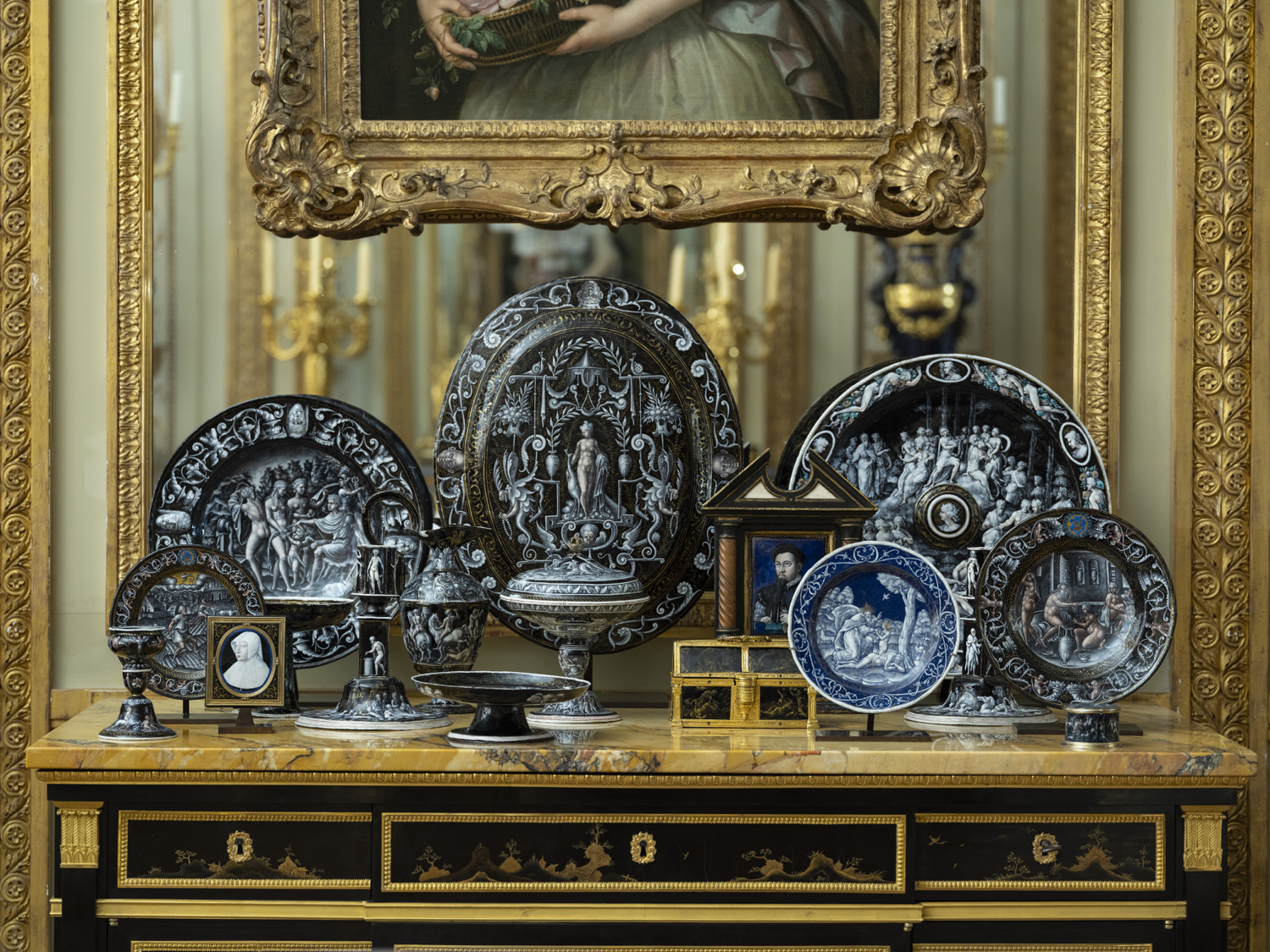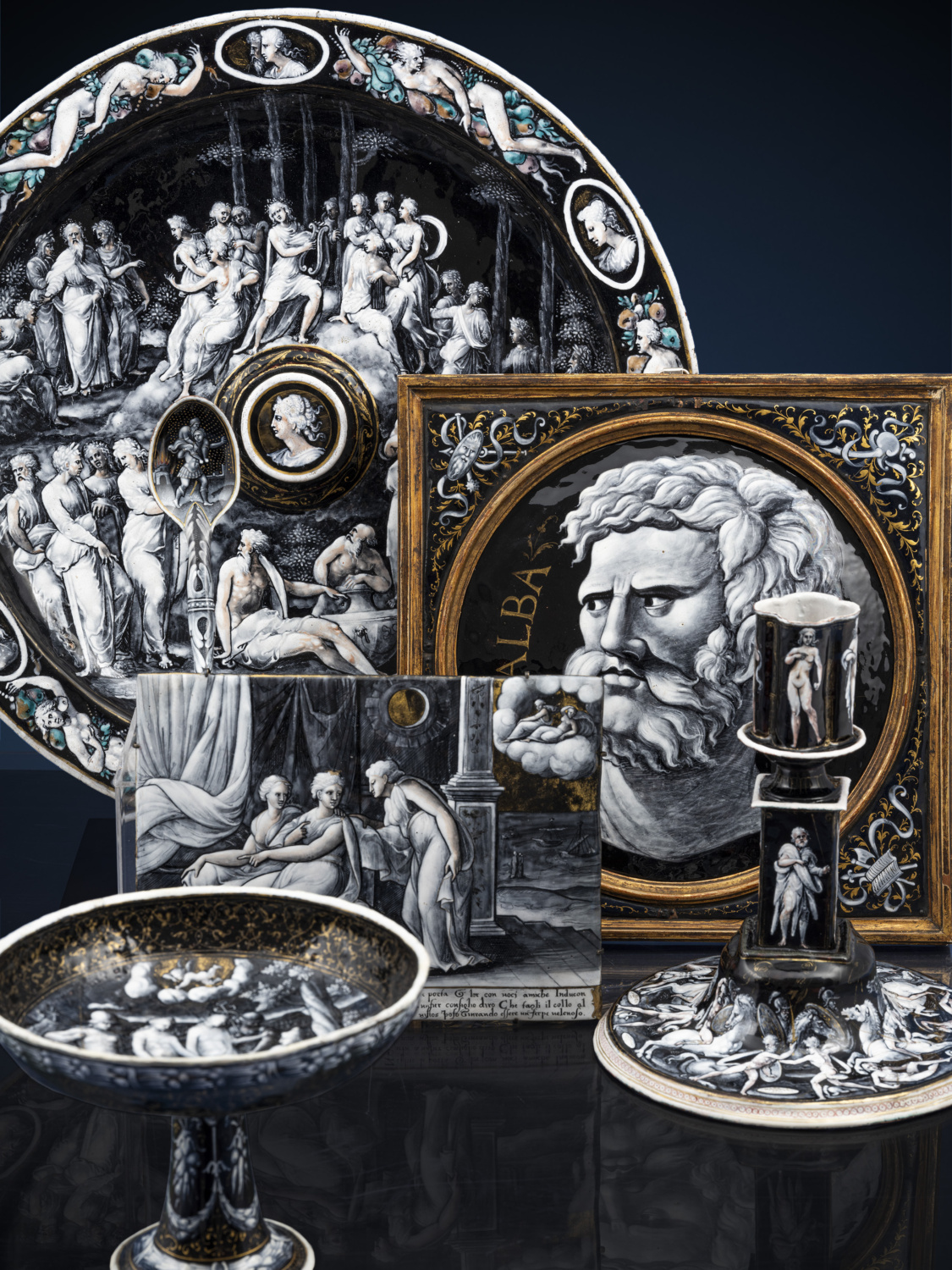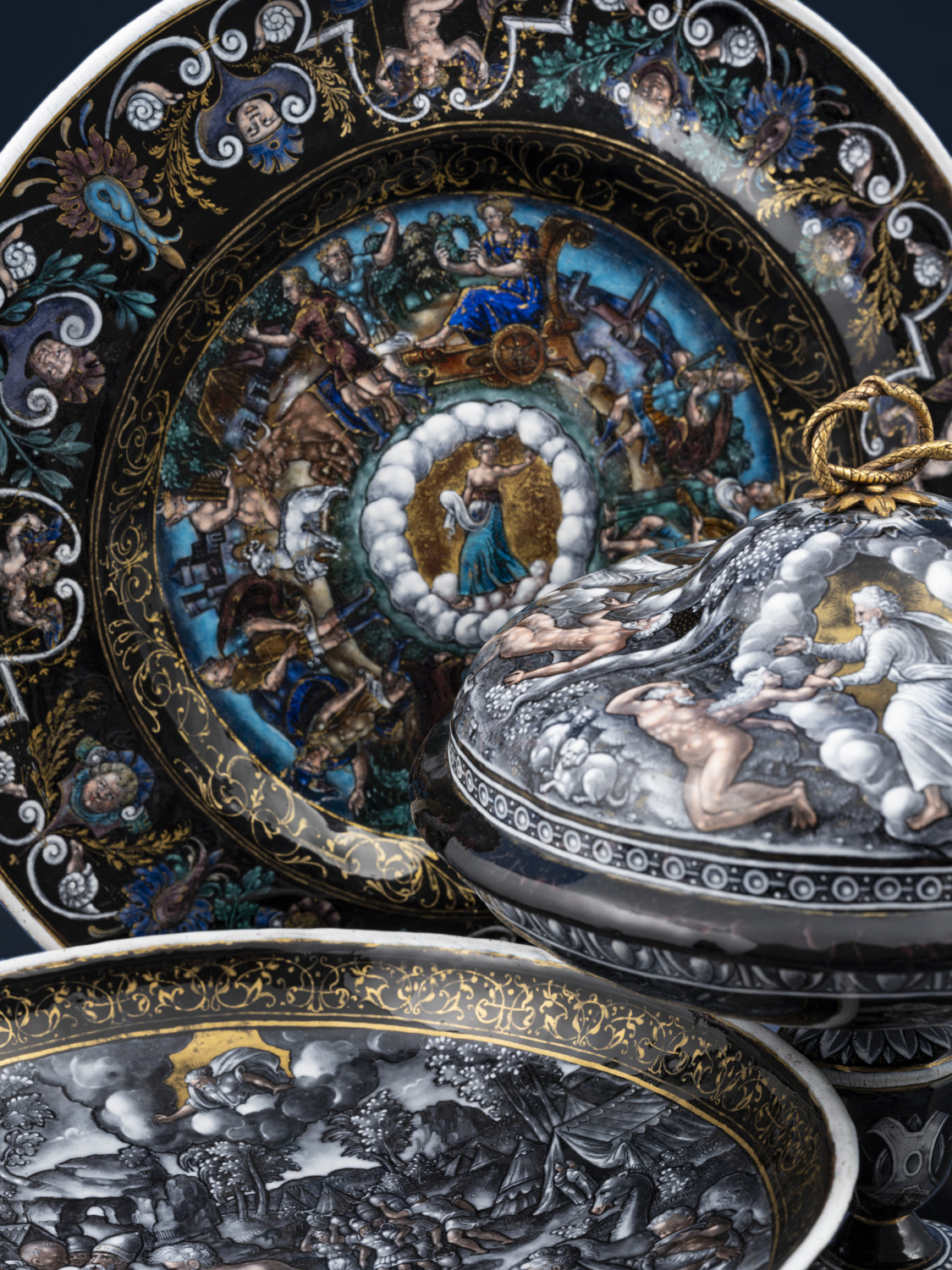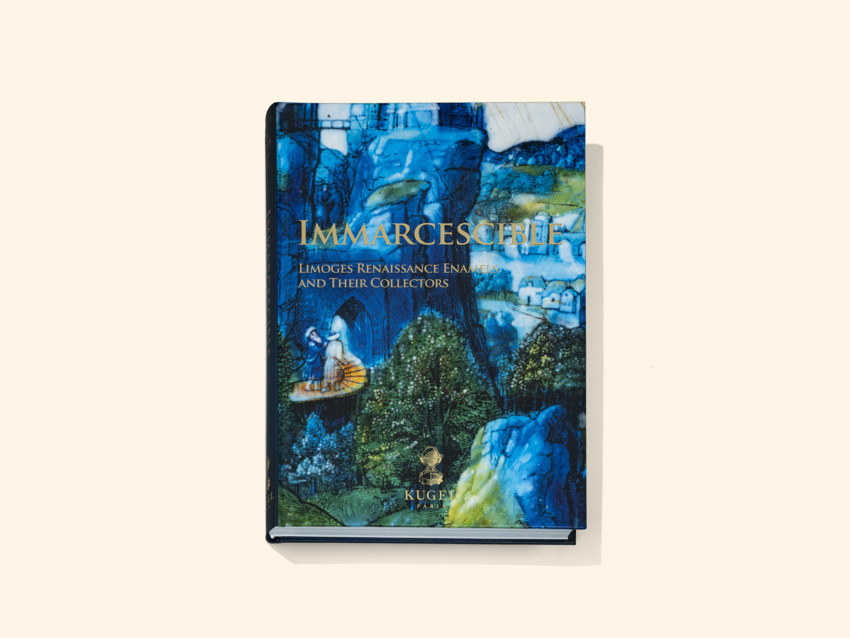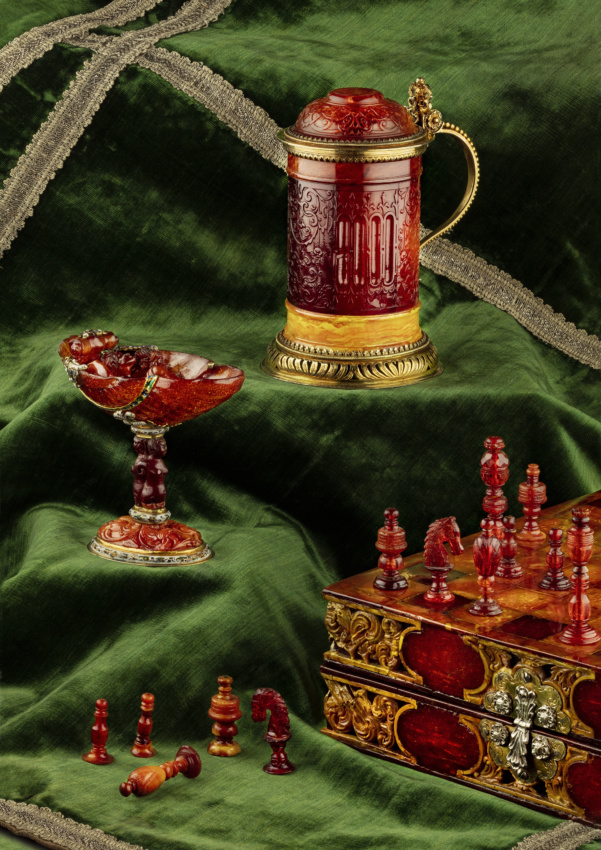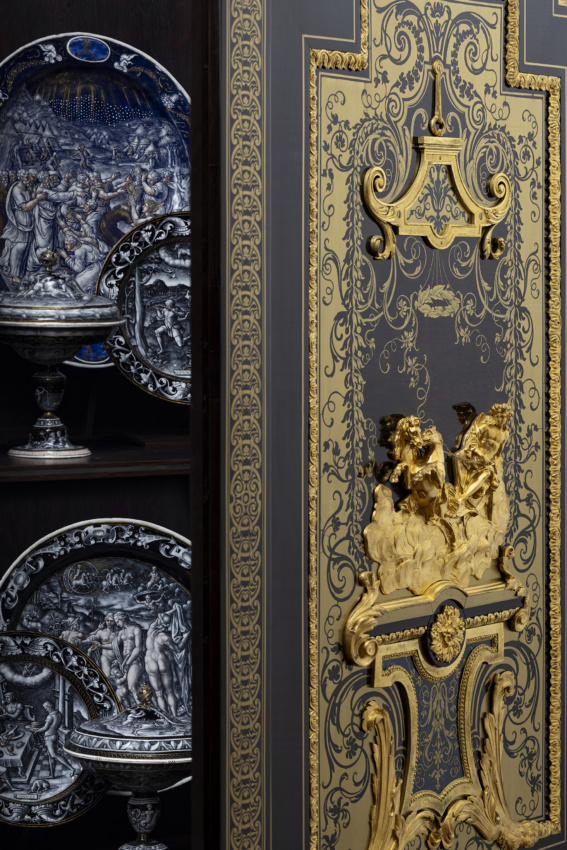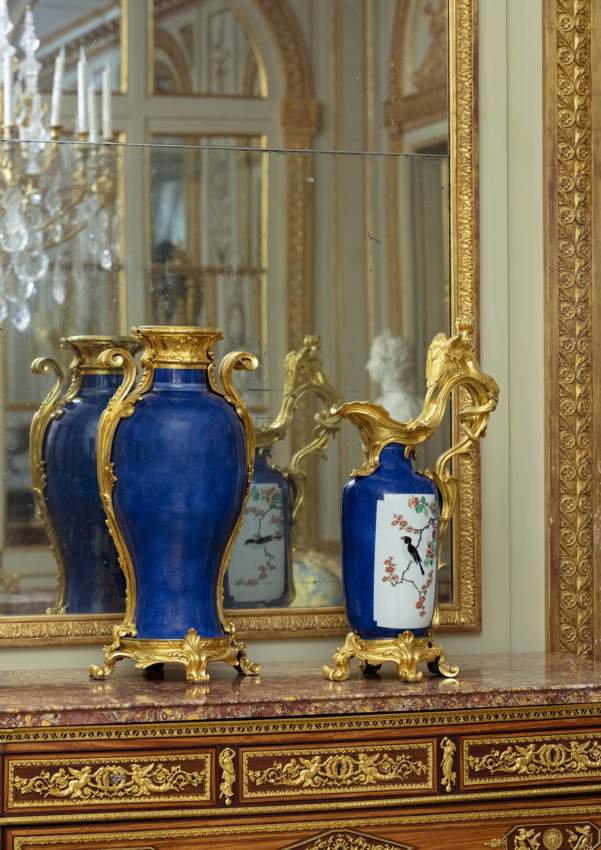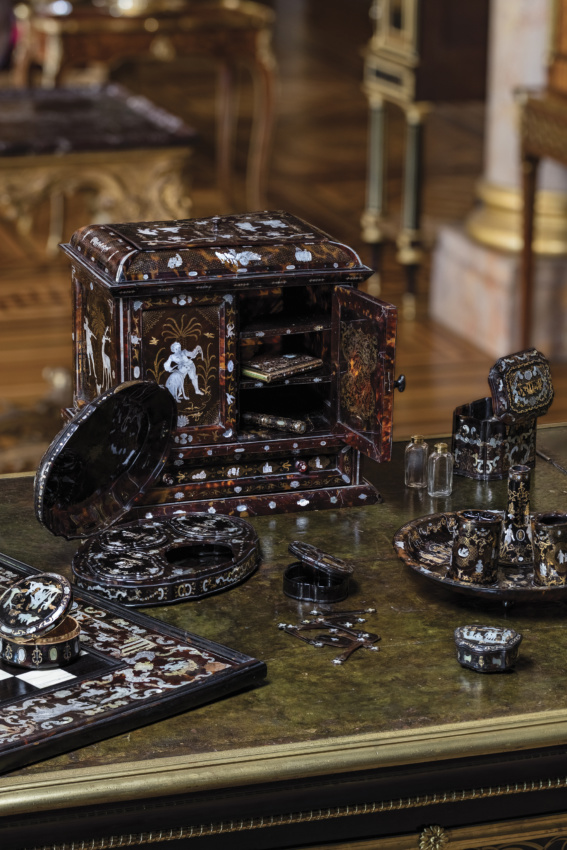Visit the exhibition
25, quai Anatole France
75007 Paris
11 am to 6 pm
Free entry, no booking required
Closed on Saturday, 1st November and Tuesday, 11th November
Press contacts
Favori – Grégoire Marot
Amy de Leusse – amy@favoriparis.com
For five centuries, Renaissance Limoges enamels have captivated collectors with their unfading shine and their remarkable ability to defy time and never fade. Our new exhibition traces not only the history of these luminous works but also that of their passionate and visionary collectors.
In an 1866 poem addressed to enameller Claudius Popelin, Théophile Gautier praised “the immarcescible enamel” – a vitrified material whose gleam resists the passing of centuries. In the late 15th century, Limoges, already renowned for its medieval champlevé enamels, developed a new method of painting on copper. The works gathered in this exhibition span a century of excellence, from 1520 to 1620, marked by the rise of this distinctly French art form. Copper, coated with colored glass and fired in a kiln, yields a smooth, glossy, and enduring surface: neither light, nor air, nor time can dull its deep hues or the delicate gold highlights applied by brush. These are, in the most literal sense, immarcescible images: unalterable, unfading.
Renaissance Limoges enamels have long been a specialty of Galerie Kugel. In the 1990s, Hubert de Givenchy sold to Alexis and Nicolas Kugel his renowned “chariot of Apollo” cabinet by Boulle, together with the collection of enamels it contained. He was passionately attached to these pieces — particularly the grisaille enamels — at a time when the market was relatively dormant, and had assembled a remarkable collection against the prevailing trend. Presented at the Biennale des Antiquaires in 1994, this collection was not dispersed: it was sold as a whole, within hours of the opening, to Pierre Bergé. The news of this spectacular sale was enough to breathe new life into the market for Renaissance Limoges enamels.
The exhibition “Immarcescible: Renaissance Limoges Enamels and Their Collectors” presents over seventy exceptional works, many never before seen by the public. From their creation to the present day, the richly illustrated catalogue accompanying the show explores the cycles of taste and rediscovery that have shaped their legacy— showing how, in every generation, a few discerning collectors are enough to bring this timeless art back into the light. Many of their names still resonate today: branches of the Rothschild family, J. P. Morgan, Henry Clay Frick, William Randolph Hearst, Hubert de Givenchy, Pierre Bergé and Yves Saint Laurent…
